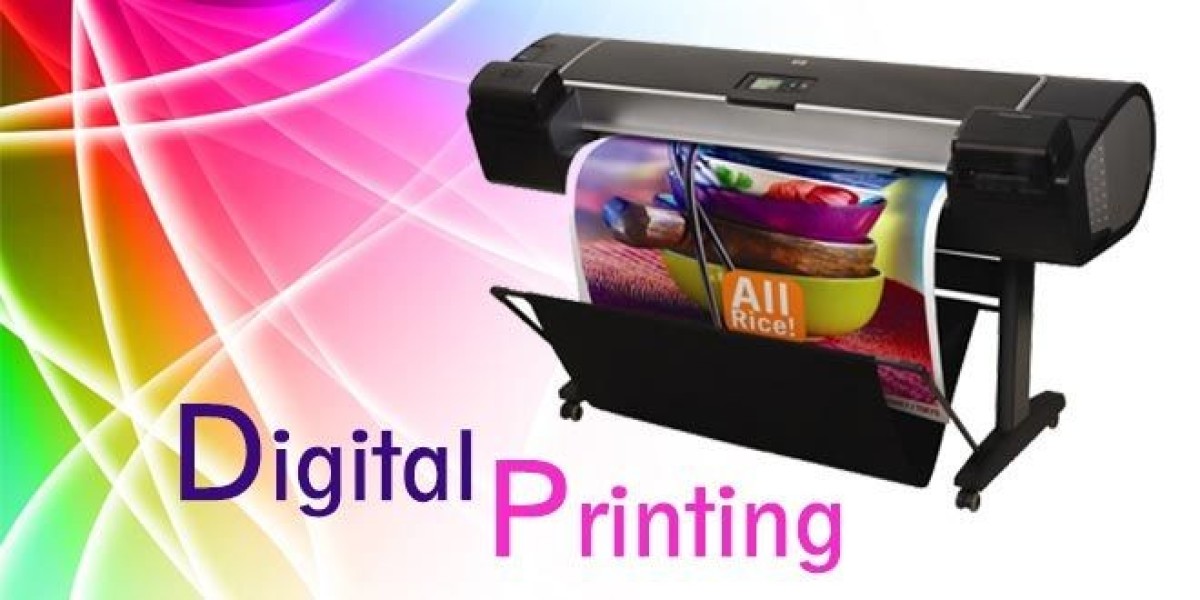In the fast-evolving world of product presentation, digital printing has become one of the most reliable methods for crafting visually appealing packaging. Brands that want flexibility, quick turnaround time, and high-quality graphics increasingly lean toward digital techniques to personalize their packaging. From startup businesses to large-scale retail brands, the shift toward faster and more customizable printing options continues to grow.
Digital printing plays a major role in modern packaging trends—from vivid colors to high-resolution artwork. Many brands rely on it due to its ability to print small quantities without compromising quality. This makes it especially useful for short product batches, limited editions, and seasonal designs. As companies seek better ways to connect with customers, methods such as digital printing for custom packaging become essential, influencing both branding and consumer perception.
How Digital Printing Works and Why It Fits Modern Product Packaging
Digital printing is based on advanced technology that transfers images and graphics directly from a digital file to the packaging material. Unlike traditional offset printing, it doesn’t require printing plates or time-consuming setup, which makes it ideal for brands requiring flexibility. It also supports customization, color variation, and detailed artwork without high costs, making digital printing for custom packaging a practical choice for businesses with varying product lines.
One of the strongest advantages of digital printing is its ability to support shorter runs. Businesses no longer need to commit to large bulk orders. With short-run packaging printing, companies can test different designs, target smaller audiences, and update seasonal themes without worrying about high production waste. This modern approach offers the perfect balance between cost-efficiency and design freedom.
Why Digital Printing Has Become a Preferred Packaging Technique
Digital printing stands out in the packaging market for several important reasons:
1. Fast Turnaround Time
Since digital printing works without the need for plates or extra tooling, it significantly reduces production time. This allows businesses to respond quickly to product launches, urgent restocks, or promotional events.
2. Highly Accurate Color Reproduction
Digital presses today deliver crisp graphics, smooth gradients, and excellent color control. Whether a brand needs bright tones or complex artwork, digital printing maintains consistency across the entire batch.
3. Ideal for Customization
Brands looking to personalize their packaging for different customers or campaigns benefit from personalized packaging printing. This includes printing customer names, unique artwork, special editions, and QR codes for marketing.
4. Lower Costs for Smaller Orders
Unlike traditional printing, digital processes make it cost-effective to produce small orders. This is especially beneficial for small businesses trying new packaging styles or launching new product variants.
Applications of Digital Printing in the Packaging Industry
Digital printing supports a wide range of packaging types. Whether a business sells food, cosmetics, electronics, or accessories, it can incorporate detailed graphics and brand messaging without extra setup costs. Common applications include:
- Folding cartons
- Corrugated boxes
- Product labels
- Flexible pouches
- Subscription boxes
- Display packaging
Additionally, digital label printing services provide a reliable method for producing labels in various shapes, sizes, and finishes. From waterproof labels to metallic accents, digital technologies offer versatility across different markets.
Digital Printing and the Rise of Sustainable Packaging
The packaging industry increasingly values eco-conscious production. Digital printing contributes positively to sustainability efforts for several reasons:
- It produces less waste since it doesn’t require plates or chemicals.
- Short-run production reduces unused stock and landfill waste.
- Many digital inks are now water-based or low-VOC, making them safer and more sustainable.
Brands aiming to align with environmental values prefer digital printing because it helps reduce overall material consumption while maintaining premium visual quality.
Key Features That Make Digital Printing Valuable for Brands
High Detail and Crisp Artwork
Digital printers can reproduce intricate patterns and gradients that traditional techniques struggle with, especially on small packaging formats.
Support for Multiple Materials
Digital printing works on paperboard, cardboard, kraft, labels, and even some flexible films. This allows manufacturers to unify their branding across product lines.
Flexibility for Frequent Design Updates
Brands that often rebrand or refresh designs appreciate how easily they can update artwork and print new batches without paying for new plates.
Challenges and Limitations of Digital Printing
While digital printing offers many advantages, it also comes with certain limitations:
- It may not be as cost-effective as offset printing for extremely large volumes.
- Specialty finishes like embossing, foil stamping, or textured coatings may require extra steps outside digital technology.
- Some materials may need pre-treatment for optimal ink adhesion.
Still, for most small to medium-sized businesses, digital printing remains the most convenient and flexible choice.
How Digital Printing Enhances Branding and Customer Experience
Today’s customers expect more than functional packaging—they want appealing visuals and memorable unboxing moments. Digital printing supports these expectations by offering creative freedom without high production costs.
- Brands can experiment with unique color palettes.
- Seasonal and promotional campaigns can be executed in smaller quantities.
- Personalized packaging helps brands build stronger customer loyalty.
This approach is especially useful for subscription-based businesses, artisan brands, or companies launching new products frequently.
Is Digital Printing Right for Your Packaging Needs?
Choosing the right printing method depends on the project scale, material type, design complexity, and budget. For brands that value flexibility, short runs, and detailed artwork, digital printing remains one of the most effective choices. It supports modern branding requirements and allows companies to stay creative and responsive in competitive markets.
When packaging strategy requires unique shapes, functionality, or structural features, integrating strong visuals becomes even more important. This is where the importance of custom box design starts becoming clear, providing brands with the ability to merge visually appealing graphics with practical structural forms. Businesses that focus on high-quality presentation often use custom box design to achieve the right balance between aesthetics and product protection.
Conclusion
Digital printing continues to reshape how brands approach product packaging. Its blend of speed, customization, and vibrant detail makes it a preferred method for crafting packaging that stands out. Whether a business needs labels, folding boxes, or specialty cartons, digital printing offers the efficiency and versatility required for today’s fast-paced retail environment.
As packaging trends evolve, digital printing will remain a key tool for aligning brand identity with customer expectations—offering designs that are visually compelling, adaptable, and aligned with modern sustainability goals.


